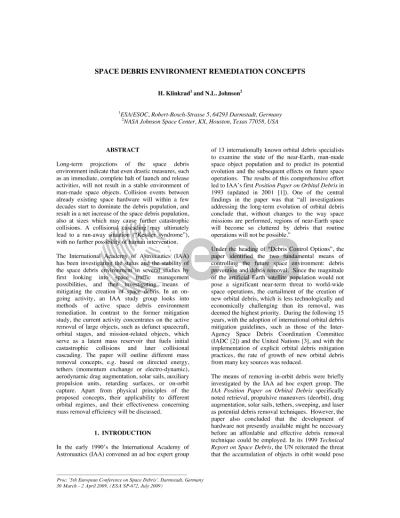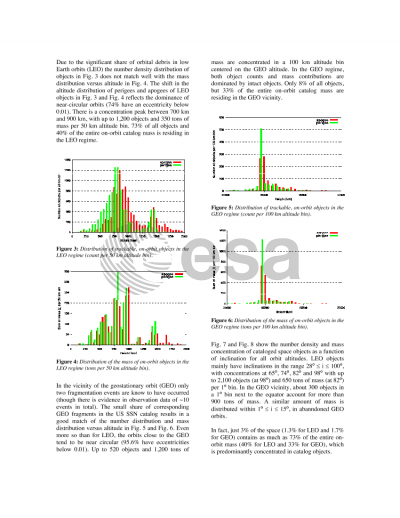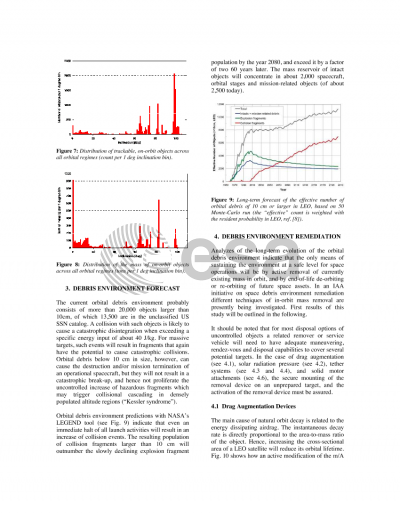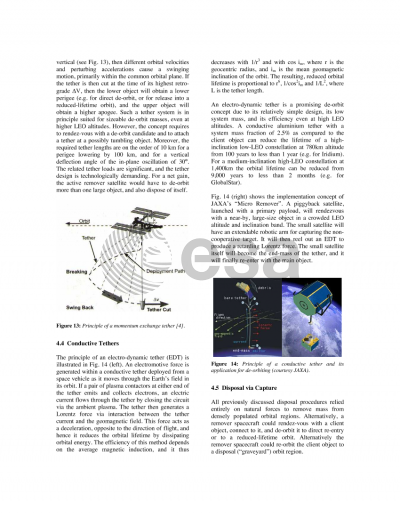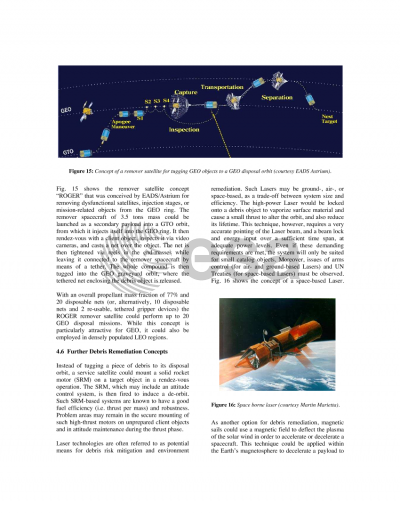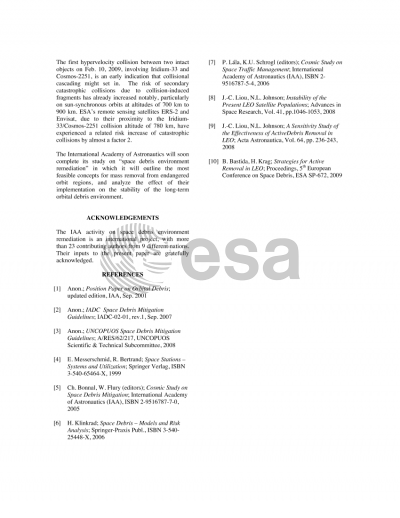Document details

Abstract
Long-term projections of the space debris environment indicate that even drastic measures, such as an immediate, complete halt of launch and release activities, will not result in a stable environment of man-made space objects. Collision events between already existing space hardware will within a few decades start to dominate the debris population, and result in a net increase of the space debris population, also at sizes which may cause further catastrophic collisions. A collisional cascading may ultimately lead to a run-away situation ("Kessler syndrome"), with no further possibility of human intervention.The International Academy of Astronautics (IAA) has been investigating the status and the stability of the space debris environment in several studies by first looking into space traffic management possibilities, and then investigating means of mitigating the creation of space debris. In an on-going activity, an IAA study group looks into methods of active space debris environment remediation. In contrast to the former mitigation study, the current activity concentrates on the active removal of large objects, such as defunct spacecraft, orbital stages, and mission-related objects, which serve as a latent mass reservoir that fuels initial castastrophic collisions and later collisional cascading. The paper will outline different mass removal concepts, e.g. based on directed energy, tethers (momentum exchange or electro-dynamic), aerodynamic drag augmentation, solar sails, auxiliary propulsion units, retarding surfaces, or on-orbit capture. Apart from physical principles of the proposed concepts, their applicability to different orbital regimes, and their effectiveness concerning mass removal efficiency will be discussed.
Preview
